AgriTech Analytics Pocket Reports
Click on the thumbnail image to the side of each description to view a PDF sample of each report.
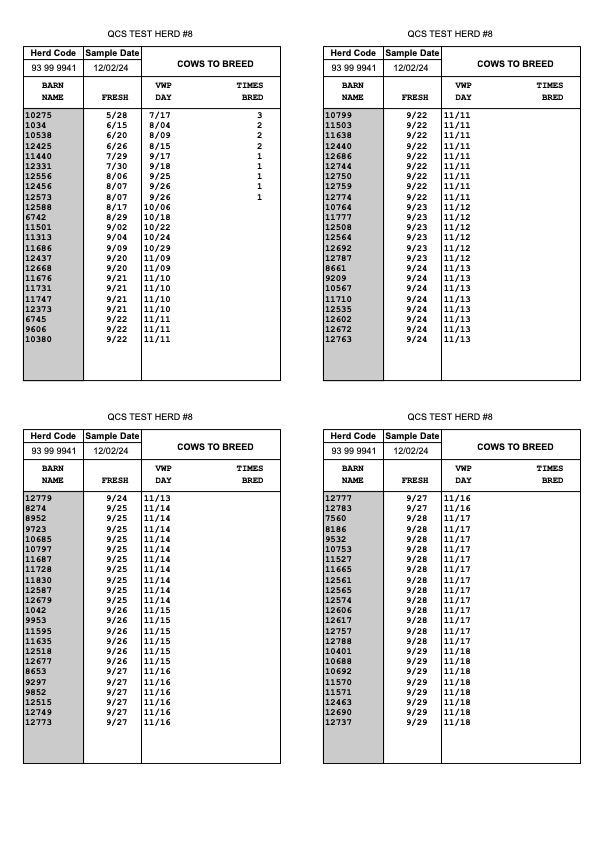
Action 1 - To Breed
Action Report 1 is a “cows to breed” list. All milking cows that have not been declared pregnant and are past their voluntary waiting period will appear on this list. It is comprised of four columns of data including barn name, fresh date, when to breed the animal based on the voluntary waiting period of the herd, and the number of times bred. There is room on the report to record the service sire of the cow. Data is sorted by days since fresh.
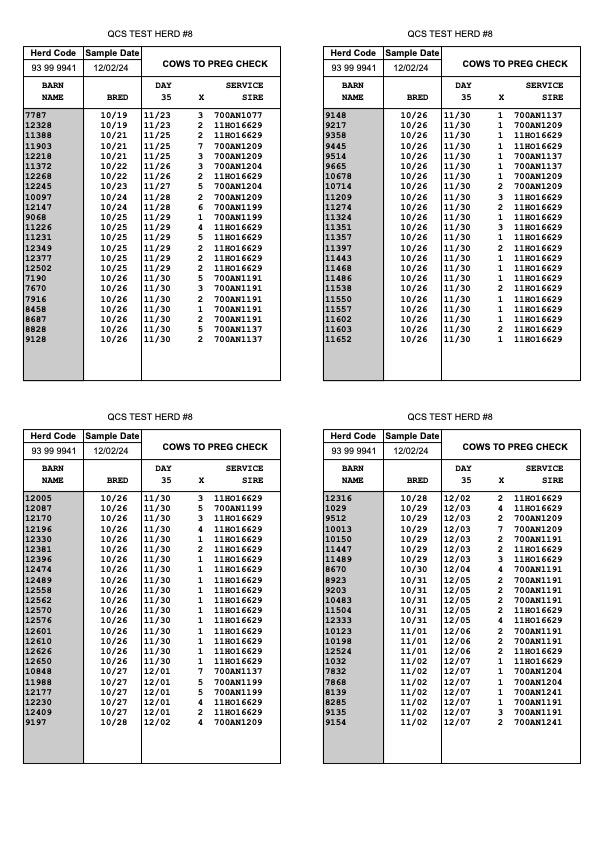
Action 2 - To Pregnancy Check
Action Report 2 is a “cows to pregnancy check” report. Cows that are bred but not yet confirmed pregnant will appear on this report. Columns of data include the barn name of the cow, the last bred date, the number of times bred, the date of the 35th day since the last breeding and the service sire used.

Action 3 - To Dry
Action Report 3 is a “cows to dry” report. Cows appear on this report if they are due to dry within the next 60 days. Dry date is based on the owner’s selection of the days the animal should be dry (typically 60) prior to calving. Columns of data on the report include the barn name of the cow, her last test day milk production, date to dry, date the animal is due to freshen, and the current somatic cell count.
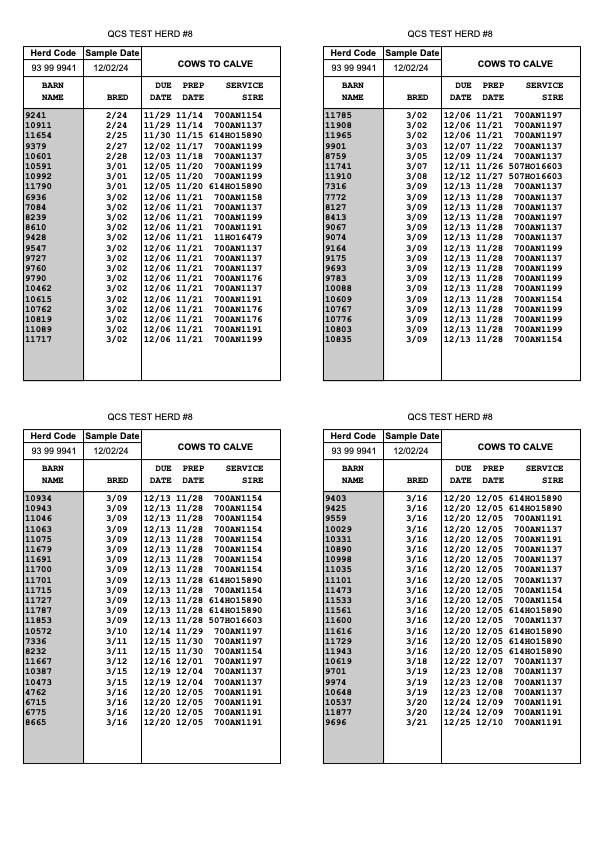
Action 4 - To Calve
Action Report 4 is a “cows to calve” list. Cows will appear on this report if they are expected to calve in the 45 days following the current test. Columns of data on this list include: the barn name, the date bred, the due date, the prep date, and the service sire. The prep date refers to a date (typically 15 days prior to expected freshening) to lead feed cows or bring them to the close-up pen.

Action 5 - Low Cows
Action Report 5 is the “low cow report” which identifies the lowest 12 cows in the herd based on (1) production index of less than 100, (2) test day production less than the herd average, and (3) the cow has to be more than 45 days in milk. The columns of data included in this list are: barn name, last test day milk, production index, due date, lactation number, and the current somatic cell count.
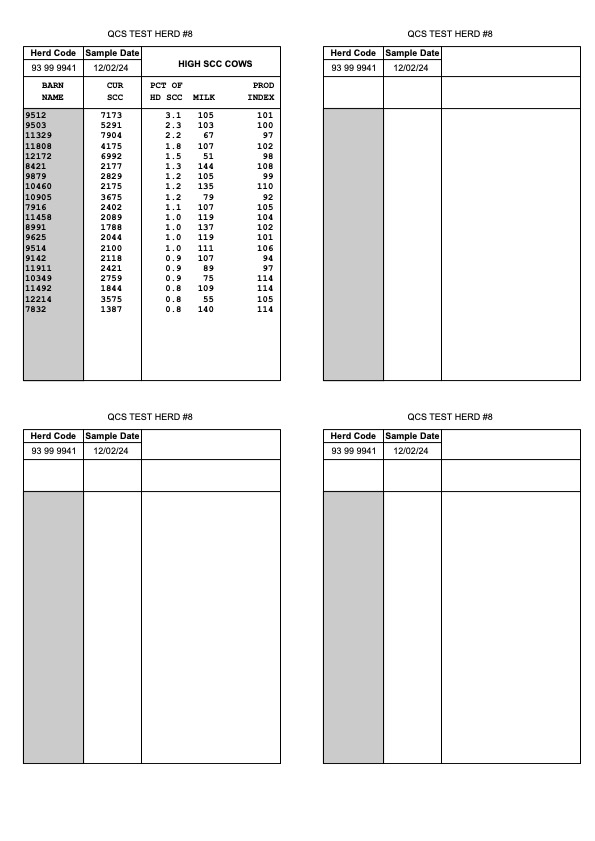
Action 6 - High SCC
Action Report 6 is the “high SCC report” and provides an extremely useful tool for dairies that are trying to lower their bulk tank somatic cell count. The report identifies, in descending order, the cows that make the largest contribution to the bulk tank somatic cell count. Data columns include the barn name, the current somatic cell count, the percent of the herd somatic cell count, the amount of milk on last test day, and their production index.
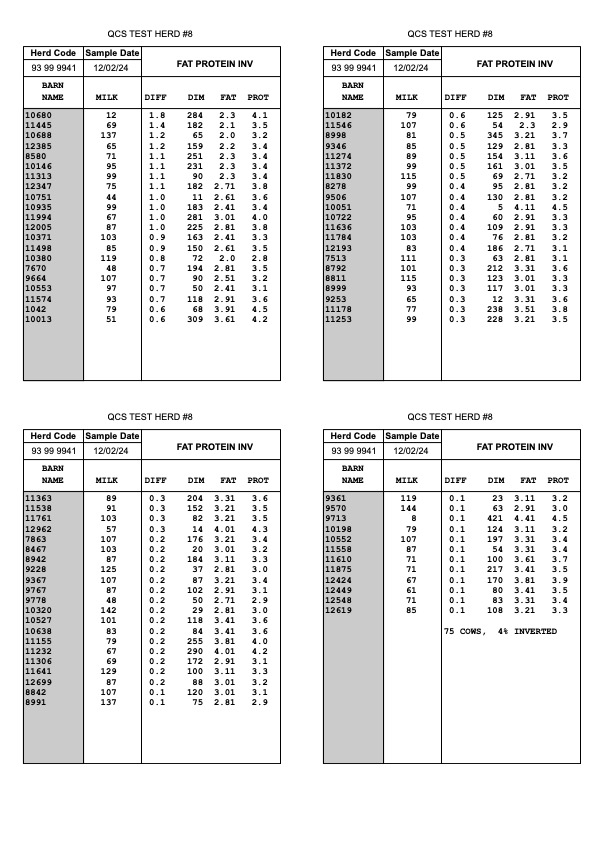
Action 7 - Inversions
Action Report 7 is the “fat/protein inversion report.” This report indicates the 20 cows with the greater inversion in their percent fat and protein. If the protein percent is higher than the fat percent, the cow has a fat/protein inversion. Fat/protein inversions can be indications of nutritional problems. Extended periods of inversions are known to cause foot problems later in lactation.
The report lists the barn name, pounds of milk on the most recent test day, the difference between the test day percent fat and percent protein, days in milk on test day, most recent percent fat and percent protein. The list is sorted by the greatest difference in the fat and protein tests.

Pockets with Management Lists
The ATA Pocket Reports are comprised of a list of animals in the herd along with management lists including cows to calve, cows to dry, cows to pregnancy check, cows not bred, and a list of problem breeders.
The herd list has several options including a one line and two line report. The one line report lists cow number, permanent and temporary string, fresh/dry date, times bred, relative value and current fat corrected milk. The two line option includes cow’s sire, days in milk, and service sire.
The management lists typically contain the first four columns of the herd list and columns pertinent to the action being described.